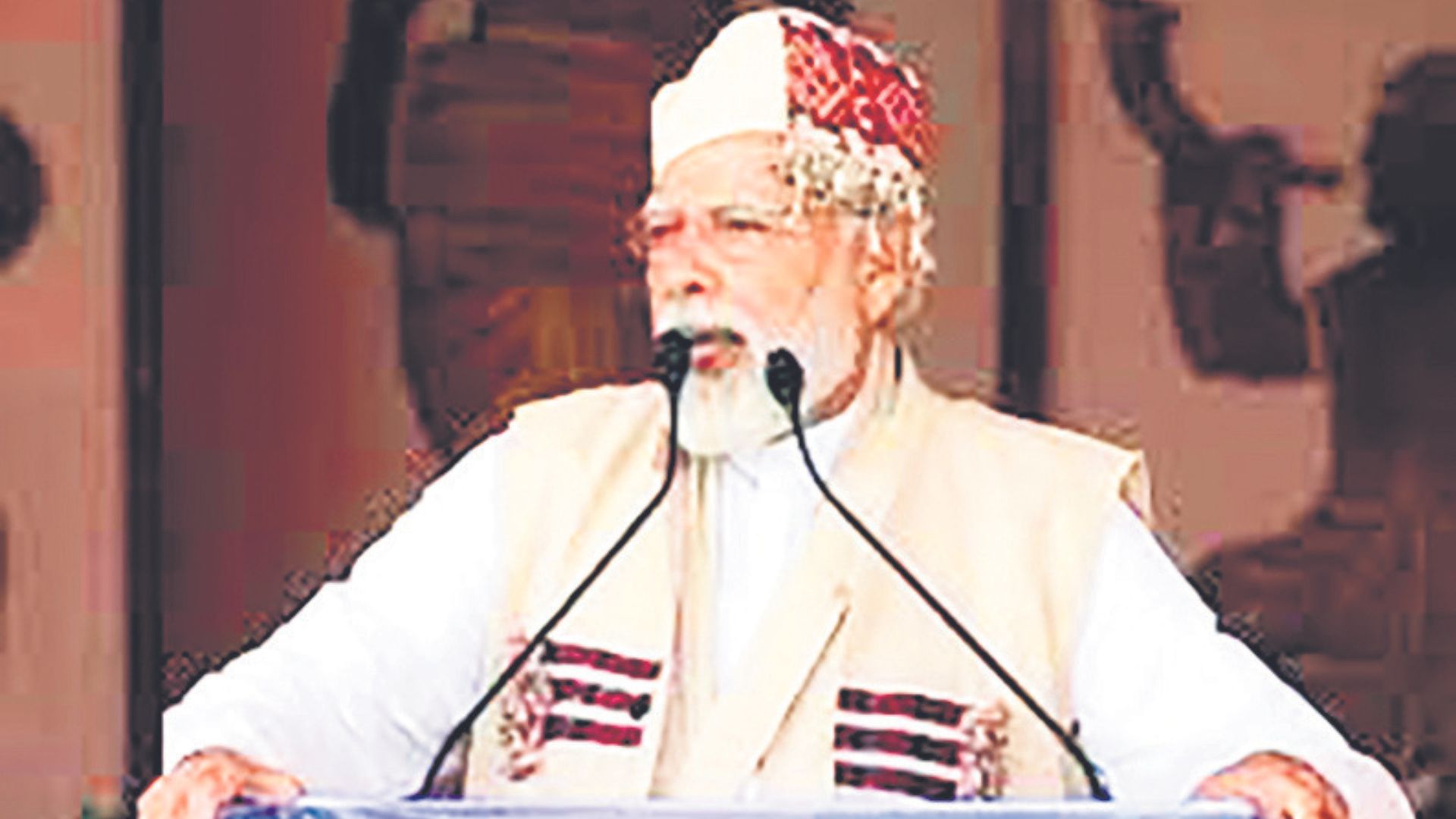
The eight states of the Northeast—Assam, Arunachal Pradesh, Manipur, Meghalaya, Mizoram, Nagaland, Sikkim, and Tripura—share borders with neighbouring countries such as Bhutan, China, Myanmar, and Bangladesh. This geographic location has historically endowed the region with a rich tapestry of social and cultural connections, often referred to as ‘Suvarnabhumi’ (land of gold) in ancient texts.
As the dust settles on the pages of history, a remarkable tale emerges—one that narrates the metamorphosis of India’s Northeast under the visionary leadership of honourable Prime Minister Narendra Modi. At the heart of this narrative lies a region once marginalised, now revitalised, owing to a concerted effort towards holistic development and social harmony.
A recent literary contribution, “Modi’s North East Story,” penned by Tuhin A. Sinha, the BJP’s national spokesperson, and Aditya Pittie, an angel investor, serves as a beacon illuminating this transformative journey. This literary work isn’t just gaining traction within India but is resonating deeply among the Indian diasporas. It’s a testament to the emergence of 4.7 crore citizens of Northeast India as the vanguard of Bharat’s resurgence.
The Modi government has shown respect and sensitivity towards the culture, identity, and dignity of the people of the region and has engaged in dialogue, development, and democracy to address the grievances and aspirations of the people. The government has made efforts for the surrender of militants through various peace talks and accords, the rehabilitation of surrendered insurgents, the creation of several autonomous councils for different tribal groups, the removal of the Armed Forces (Special Powers) Act (AFSPA) from several districts, and the reduction of border conflicts, among many other measures. The signing of the Karbi Peace Accord, the Assam Adivasi Peace Accord, the Dimasa Peace Accord, and the Bodo Peace Accord are examples of how the government has made a lasting difference.
Infrastructure Development
Underpinned by the twin pillars of peace and development and manifested in unprecedented infrastructure creation and an increase in connectivity, the Northeast is witnessing an exponential leap in its quality of life today. The speed of infrastructure projects undertaken in border areas has boosted the standard of living in far-flung districts. Northeast India witnessed an unprecedented jump in the number of airports in the North Eastern Region (NER), which rose from nine to 16, and the numbers of flights have increased from about 900 to 1,900 post-2014. Some Northeastern states have made their way onto India’s railway map for the first time, and efforts are being made to expand the waterways too. At the same time, the restoration of age-old conflicts and improved law and order situations have led to record tourist footfalls in the region. PM Modi changed the ‘Look East Policy’ to ‘Act East Policy’ and took a holistic approach to tackle the challenges of the region. The launch of the ‘Act East Policy’ has opened new avenues for trade and collaboration, positioning the Northeast as a gateway to Southeast Asia. Through enhanced connectivity and strategic collaborations, the region emerges as a pivotal player in fostering regional integration and economic growth. Unlike most PMs in the past who handled the Northeast from a distance, PM Modi has visited the Northeast around 60 times in nine years, which is perhaps more than the total number of visits by all his predecessors put together. The result is a miraculous transformation in the region, with the Northeast being cited all over as the Modi government’s development model.
Socio-Economic Development
While infrastructure and economic development are crucial, the preservation and promotion of the unique cultural heritage of the Northeast have not been overlooked. Prime Minister Modi’s dedication to nurturing and celebrating the diverse traditions, languages, and customs of the region has not only strengthened the social fabric but has also projected the Northeast onto the global stage. His unprecedented visits to the Northeast, coupled with strategic initiatives, have sown the seeds of progress and prosperity.
Economic indicators underscore this remarkable turnaround, with the Northeast witnessing a surge in GDP and trade, coupled with a decline in insurgency and enhanced connectivity. The cumulative GDP of the Northeastern states has more than doubled from 2.97 lakh crore to 6.81 lakh crore, and their share of the Indian GDP has increased from 2.6 percent in 2013–14 to 2.9 percent in 2021–22. It may be noted that in the last few years, the Northeast has witnessed many firsts that should actually have happened long, long ago. Almost 60 years after Nagaland attained statehood, the national anthem was played inside the Nagaland Assembly for the first time on February 21, 2021. Similarly, the Tripura Assembly played the national anthem for the first time on March 23, 2018, after the BJP government was sworn in the state. For the first time since our independence, under PM Modi, our most farflung villages on the border have been given top priority for development and employment generation under the recently launched Vibrant Village Programme.
Conclusion
Unlike most Indian PMs who did not challenge the status quo, PM Modi thrives on taking the uncharted route. Social justice and historical course correction are always high priorities of the Modi government, be it about individuals or a region. Northeast India today has the highest-ever representation in the Union Council of Ministers, wherein there are two cabinet ministers and three ministers of state. For the first time, a Member of Parliament (MP) from Tripura has found a place in the Council of Ministers. Over the years, Nagaland’s biggest annual cultural extravaganza, the Hornbill Festival, and Manipur’s Sangai Festival have been attracting visitors from all parts of the country. These endeavours epitomise a commitment to inclusivity and progress, reflective of PM Modi’s mantra of ‘Sabka Saath, Sabka Vikas’.
Dr Anil Agrawal, Member of Parliament, Rajya Sabha